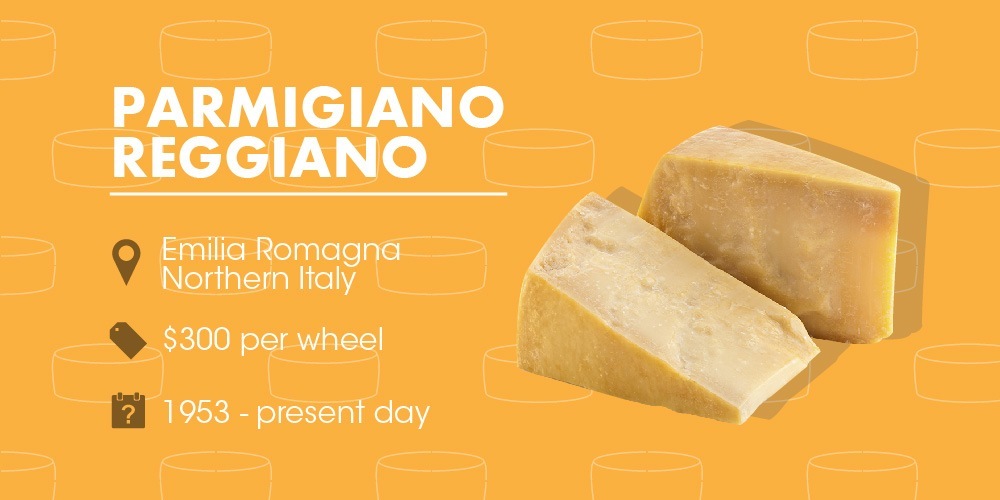
Parmesan cheese (Parmigiano-Reggiano, ’The Prince of Parmesans’)
Parmigiano-Reggiano is a type of Parmesan cheese that takes two years to mature and in the meantime local dairy farmers can find themselves with little or no cash flow. Italian Bank Banco Emiliano accepts the cheese as collateral for a personal loan, giving farmers the cash injection they need until they can sell their wares.
If farmers default on the loan the bank sells the cheese, which is valued at $300 per wheel. The Bank’s vault, containing $187 million worth of cheese, has been hit by would be cheese thieves three times, most recently in 2009.
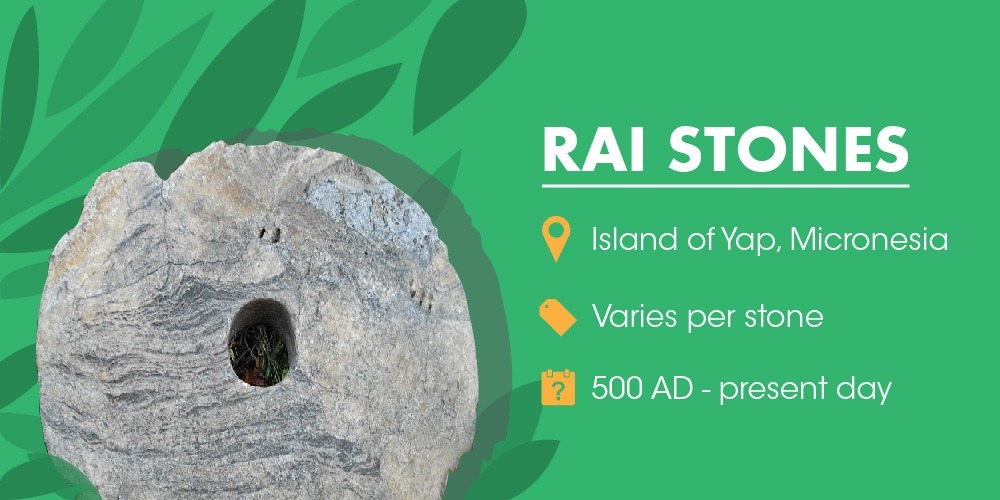
Rai stones
Rai stones are large discs carved from limestone with a hole in the middle and are used as currency on the Micronesian island of Yap.
The value of the stone is not based on its size but its history. For example, the more people who died transporting the stone, the higher its value.
Many stones are too large or fragile to move, so transactions are an oral agreement of ownership rather than a physical exchange. When one stone was being transported by canoe it fell overboard and sank. Locals agreed that the stone must still be on the sea floor and as a result held value and can still be traded.
Rai stones are still used today in social transactions like marriage, inheritance and political agreements.

Mobile phone minutes
In countries like Egypt, Nigeria and Ghana, where hyperinflation has devalued the national currency, people have begun trading mobile phone airtime minutes for small purchases. This is done by trading prepaid top up cards or using apps that allow users to wirelessly send airtime to other users.
These services have begun expanding into other countries as a convenient way of making small transactions.
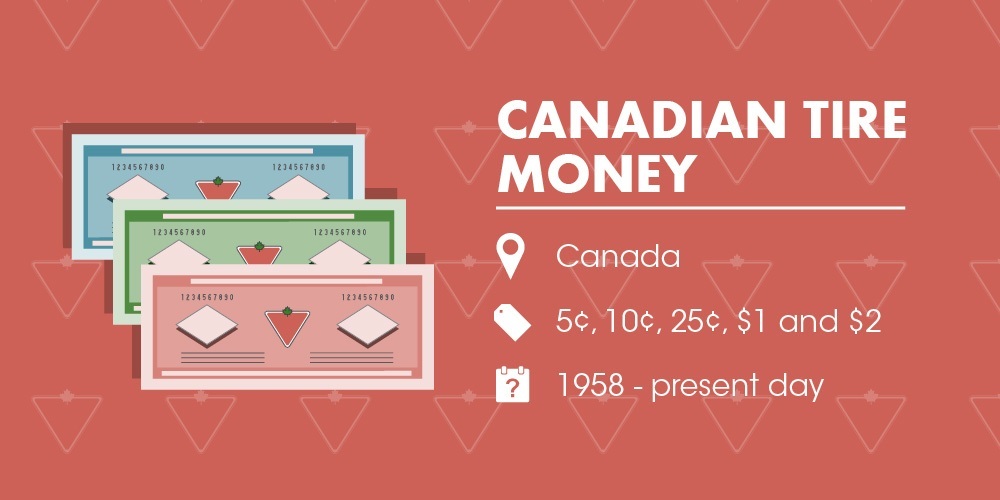
Canadian Tire money
Canadian Tire Money was created by Canadian Tire in 1958 as a customer reward scheme. By shopping at its gas stations and convenience stores customers could earn coupons for money off their next purchase.
It became so popular that other businesses began accepting CTM. Toronto based folk singer Corin Raymond used CTM to finance an album, and a bar in the city has an annual ‘Canadian Tire Money night’, with all proceeds going towards buying the next year’s outdoor furniture.
In the mid-1990s, it was reported that a man in Germany was caught with up to $11m in counterfeit Canadian Tire Money. A man from Georgia had a similar idea and was caught with over $45m in counterfeit coupons.

Shire silver
Unlike most local currencies that take the form of paper notes or a credit card, Shire Silver is made with a small amount of real gold or silver that has been laminated and is roughly the same size as a credit card. The value of each card is the same as the weight of the metal contained inside.
The scheme started in New Hampshire, USA, as a local currency but its creator claims to have received orders from all over the world. By using precious metals instead of paper notes the creator of Shire Silver hopes that the currency will hold its value for a longer period of time.
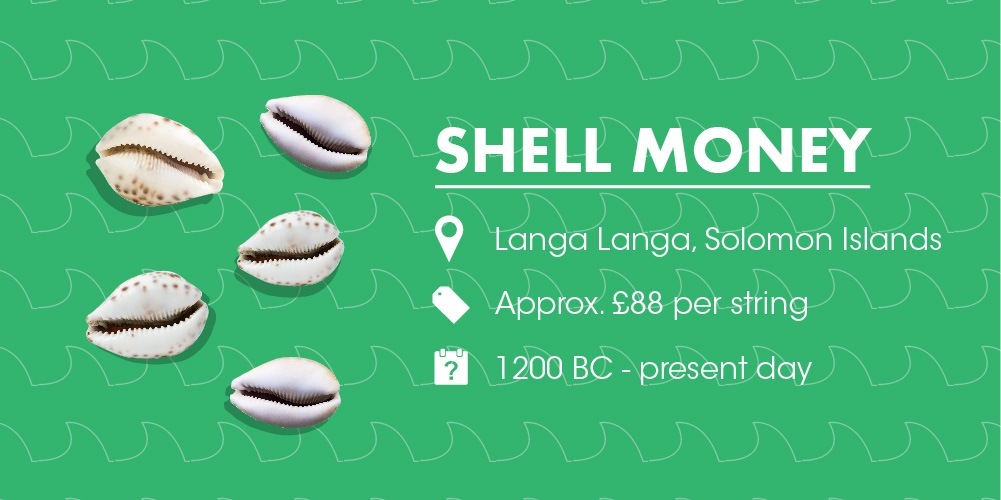
Shell money
Seashells have been used as a form of currency all over the world as far back as 1200BC and are still in use today by the people of Langa Langa Lagoon in the Solomon Islands.
These shells are used to create jewellery that is then used by locals as a way to buy livestock, land, settle disputes and is even used as a dowry. The local people also sell this jewellery to travellers for more traditional forms of money that they use to buy goods from neighbouring islands. Over time these shells have become increasingly rare which has caused their value to increase.
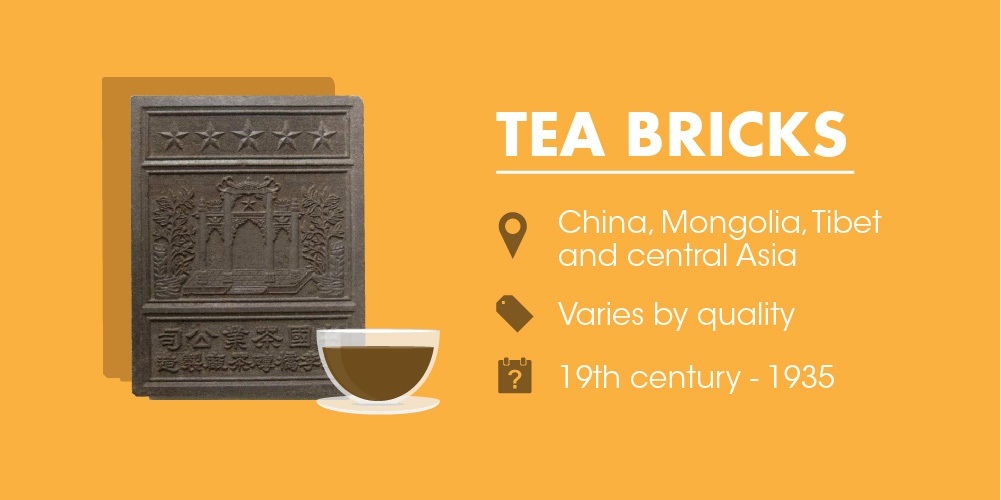
Tea bricks
Made from compressed tea leaves, tea bricks were used as currency throughout Asia and were still in use up until the beginning of the Second World War. Tea bricks could be used to purchase livestock or even pay taxes, They were even preferred over coins in countries like Mongolia, Siberia and Tibet as they could be used to treat coughs and colds or eaten when food was scarce.
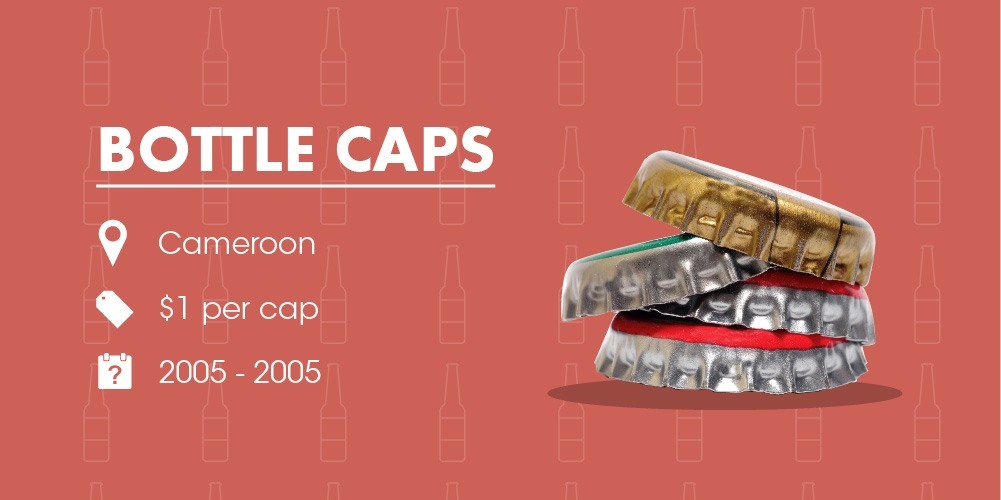
Bottle caps
In 2005, a brewery in Cameroon placed prizes under beer caps to boost sales. When rival companies did the same, competition escalated resulting in a prize under almost every cap. Prizes ranged from free beer to sports cars and with a winning cap being worth the equivalent of $1 – the same price as a bottle of beer – people began exchanging the caps for goods and services.
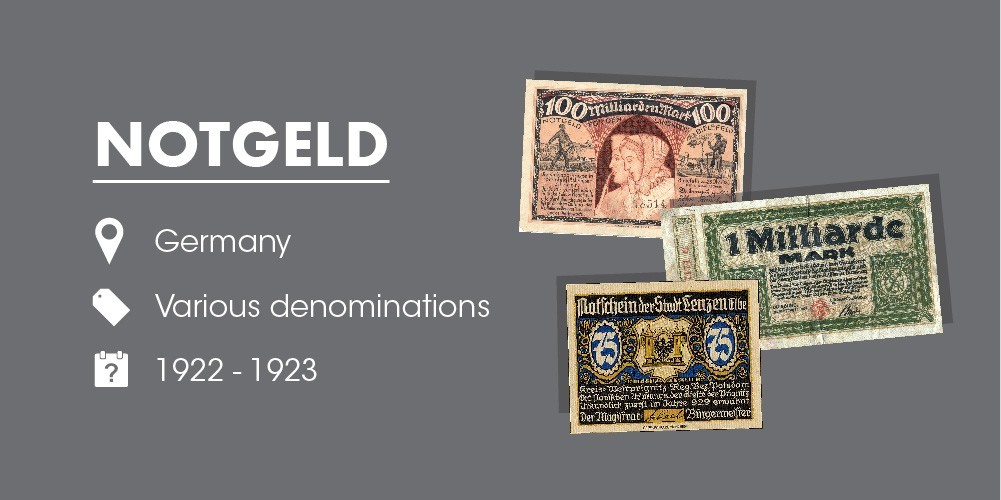
Notgeld (emergency money)
Following WWI Germany experienced a period of hyperinflation, which occurs when there’s a loss of confidence in a currency’s value, causing sellers to raise prices. As the German Central Bank struggled to keep up with the demand for banknotes, Notgeld – or emergency money – was issued. Notgeld was usually made from paper but leather, wood and even playing cards were used as prices continued to double roughly every 28 hours. By November 1923 the American dollar was worth over four trillion German marks…
Disclosure: The original article, by (GoCompare.com, was edited ([ ]) and abridged (…) by the editorial team at  munKNEE.com (Your Key to Making Money!)
munKNEE.com (Your Key to Making Money!)  to provide a fast and easy read.
to provide a fast and easy read.
“Follow the munKNEE” on Facebook, on Twitter or via our FREE bi-weekly Market Intelligence Report newsletter (see sample here , sign up in top right hand corner)
 munKNEE.com Your Key to Making Money
munKNEE.com Your Key to Making Money